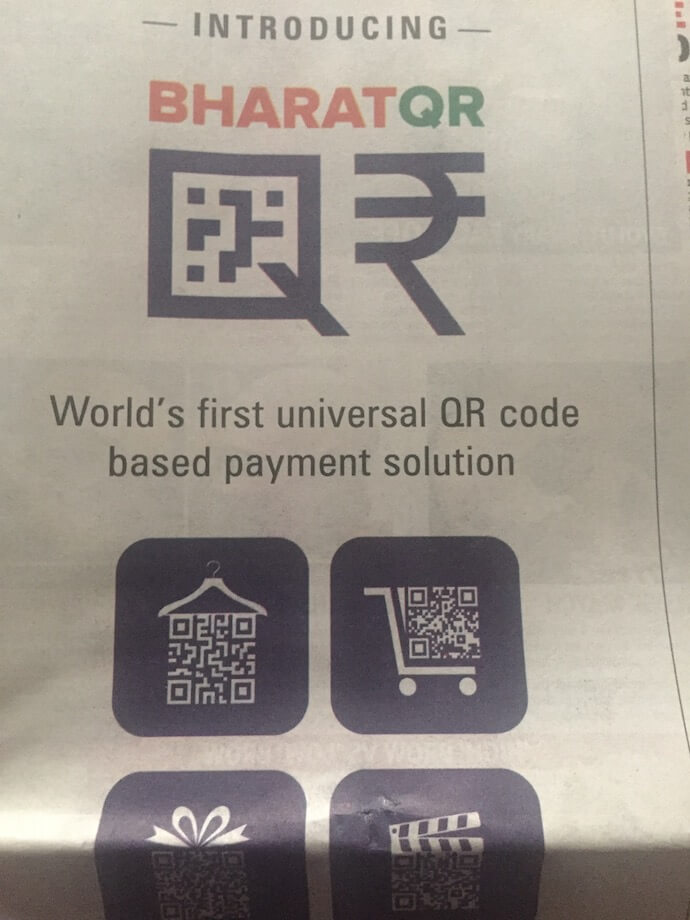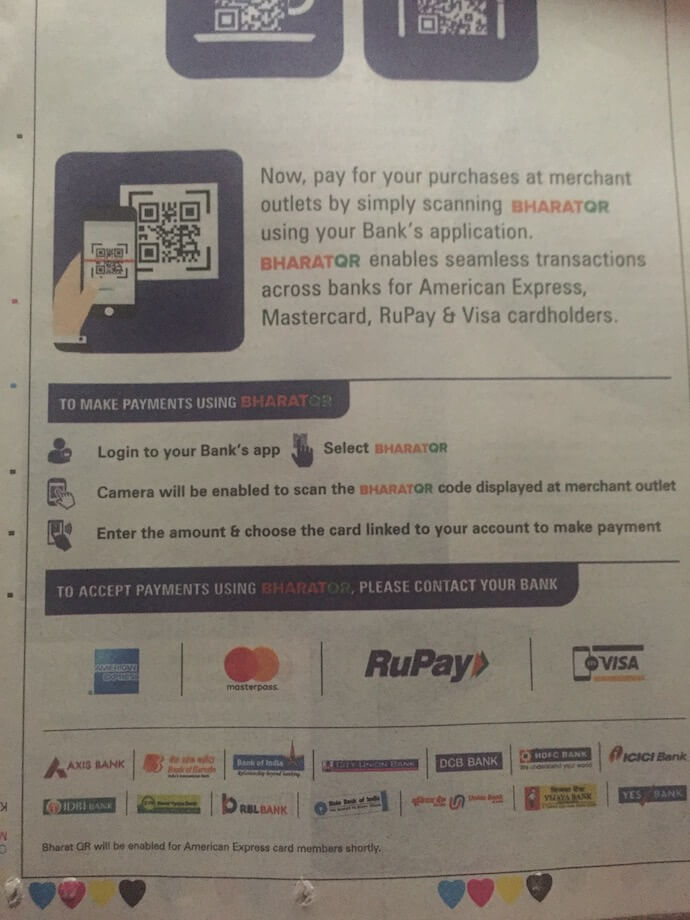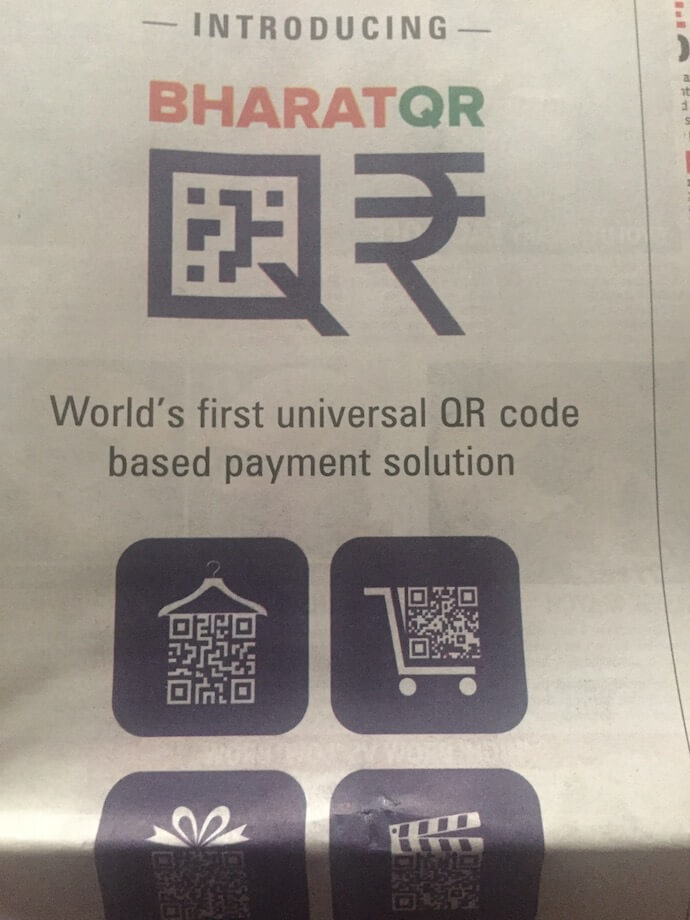Paytm was the first payments wallet to mass market QR Code payments in India. By Nov 2016, within in a year of its launch, Paytm recorded 5 million transactions per day. Reportedly, they had about 850,000 merchants registered to accept such payments.
Also Read: Paytm QR Code payments: How to send & receive money.
On Nov 8, 2016, the Indian Government demonetized INR 500 and 1,000 currency notes. This move was to encourage people to transition to cashless payments.
The QR Code payments sector saw a surge in entry of existing payments players like Freecharge and Mobikwik. Established payment processing companies and banks such as Visa (via mVisa), MasterCard (via MasterPass QR), and State Bank of India (via Anywhere app) also joined the list.
The entry of so many players in QR Code payments in India gave rise to a major challenge. Now merchants will need to display a unique QR Code of each payments provider. This can not only lead to confusion amongst consumers but also eat up display space of merchants.
Bharat QR
In Dec 2016, Piyush Goyal, Minister of State for Power, Coal and Renewable Energy, lead talks with payment processing companies, banks, and Govt. officials.
The outcome: Bharat QR (previously labeled India QR)
Bharat QR is a common merchant QR Code that will be valid across payment processing companies—MasterCard, Visa, and RuPay.

Initially slated to launch in January 2017, Bharat QR went live on 20 Feb 2017
How does Bharat QR work?
This is how it works:
- The payment provider will issue a Bharat QR to a merchant
- The QR Code will link to the merchant’s bank account details
- To make a payment, the customer has to login to their bank’s app and select Bharat QR
- Scan the QR Code using the app
- The customer will then have to enter the amount of payment and select the card linked to their bank account
- The billed amount gets transferred from the customer’s account to the merchant’s account
Note: Customers with any bank account can transfer money, provided, both they and the merchant use Visa, MasterCard or RuPay apps.

Also see how TATA Sky helps people recharge their DTH from their TV screens.
Benefits of Bharat QR
- Cases of credit/debit card information theft are rampant. With Bharat QR, users can make payments without facing the risk of getting their card information stolen
- With the Bharat QR, the merchant will not have to pay an additional transactional fee that accompanies card transactions
- There is no hassle of transferring money from e-wallets to bank accounts. This makes it easy for merchants to accept digital payments
- Unlike e-wallets, there is no limit on transactions with the Bharat QR
The launch of Bharat QR, and the BHIM app shows how India has embraced QR Code payments with open arms.
QR Code payments are easy to make and secure. So they’re seeing a lot of traction in India. In 2018, Delhi Metro’s IGI station started using QR Code to help passengers pay for their journey.
This is one way how India is using QR Codes for various use cases.
What do you think of this initiative? Share your thoughts in the comments section below.
